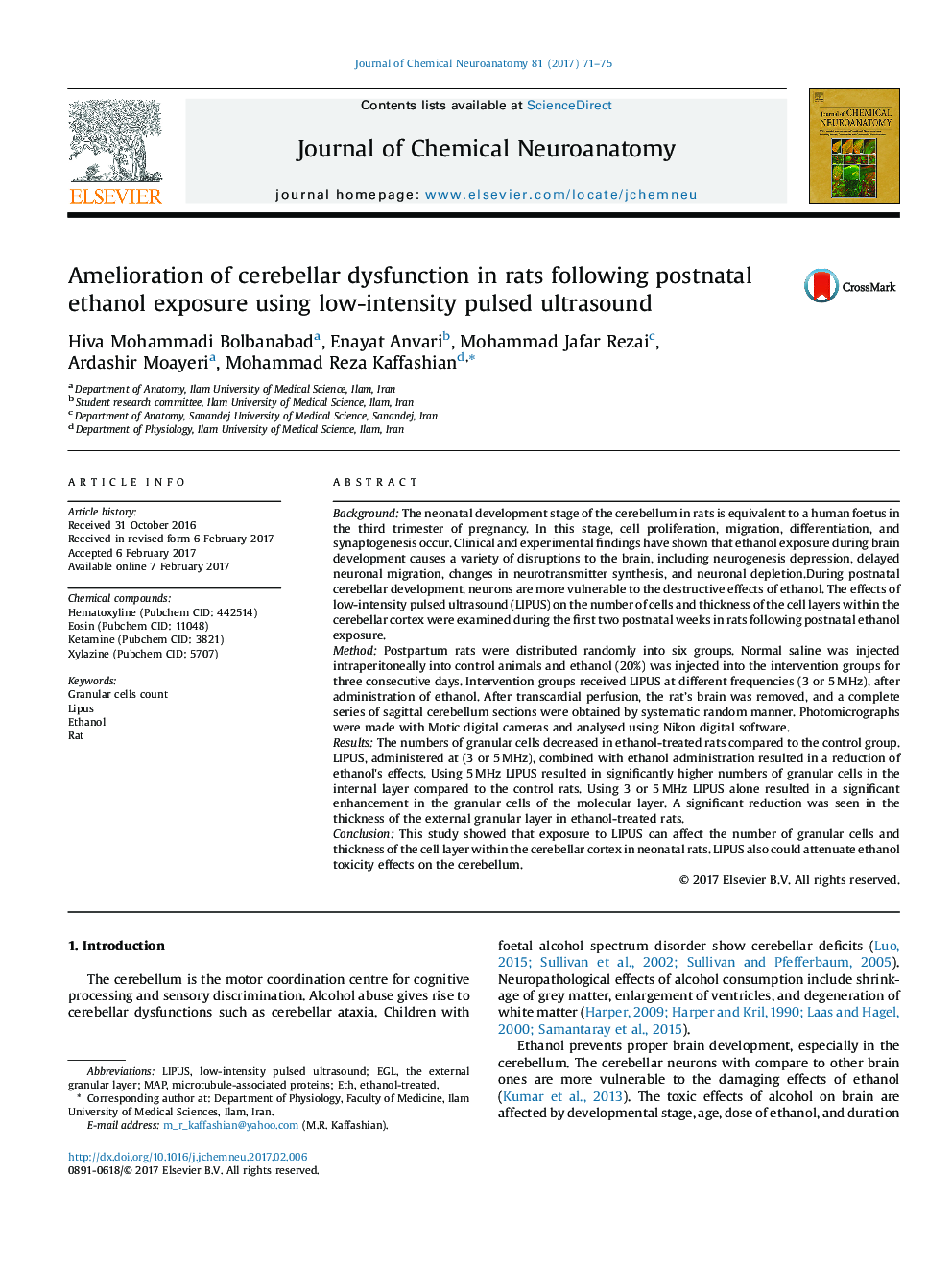| کد مقاله | کد نشریه | سال انتشار | مقاله انگلیسی | نسخه تمام متن |
|---|---|---|---|---|
| 5512744 | 1540441 | 2017 | 5 صفحه PDF | دانلود رایگان |
- Low-intensity pulsed ultrasound could influences on the number of cerebellar cortex cells during the first two postnatal weeks in rats.
- LIPUS prevented the undesirable effects of ethanol on neurons in the cerebellum of neonatal rats.
- Results of this study are the beginning of the path toward using LIPUS in medical practice.
BackgroundThe neonatal development stage of the cerebellum in rats is equivalent to a human foetus in the third trimester of pregnancy. In this stage, cell proliferation, migration, differentiation, and synaptogenesis occur. Clinical and experimental findings have shown that ethanol exposure during brain development causes a variety of disruptions to the brain, including neurogenesis depression, delayed neuronal migration, changes in neurotransmitter synthesis, and neuronal depletion.During postnatal cerebellar development, neurons are more vulnerable to the destructive effects of ethanol. The effects of low-intensity pulsed ultrasound (LIPUS) on the number of cells and thickness of the cell layers within the cerebellar cortex were examined during the first two postnatal weeks in rats following postnatal ethanol exposure.MethodPostpartum rats were distributed randomly into six groups. Normal saline was injected intraperitoneally into control animals and ethanol (20%) was injected into the intervention groups for three consecutive days. Intervention groups received LIPUS at different frequencies (3 or 5Â MHz), after administration of ethanol. After transcardial perfusion, the rat's brain was removed, and a complete series of sagittal cerebellum sections were obtained by systematic random manner. Photomicrographs were made with Motic digital cameras and analysed using Nikon digital software.ResultsThe numbers of granular cells decreased in ethanol-treated rats compared to the control group. LIPUS, administered at (3 or 5Â MHz), combined with ethanol administration resulted in a reduction of ethanol's effects. Using 5Â MHz LIPUS resulted in significantly higher numbers of granular cells in the internal layer compared to the control rats. Using 3 or 5Â MHz LIPUS alone resulted in a significant enhancement in the granular cells of the molecular layer. A significant reduction was seen in the thickness of the external granular layer in ethanol-treated rats.ConclusionThis study showed that exposure to LIPUS can affect the number of granular cells and thickness of the cell layer within the cerebellar cortex in neonatal rats. LIPUS also could attenuate ethanol toxicity effects on the cerebellum.
Journal: Journal of Chemical Neuroanatomy - Volume 81, April 2017, Pages 71-75
